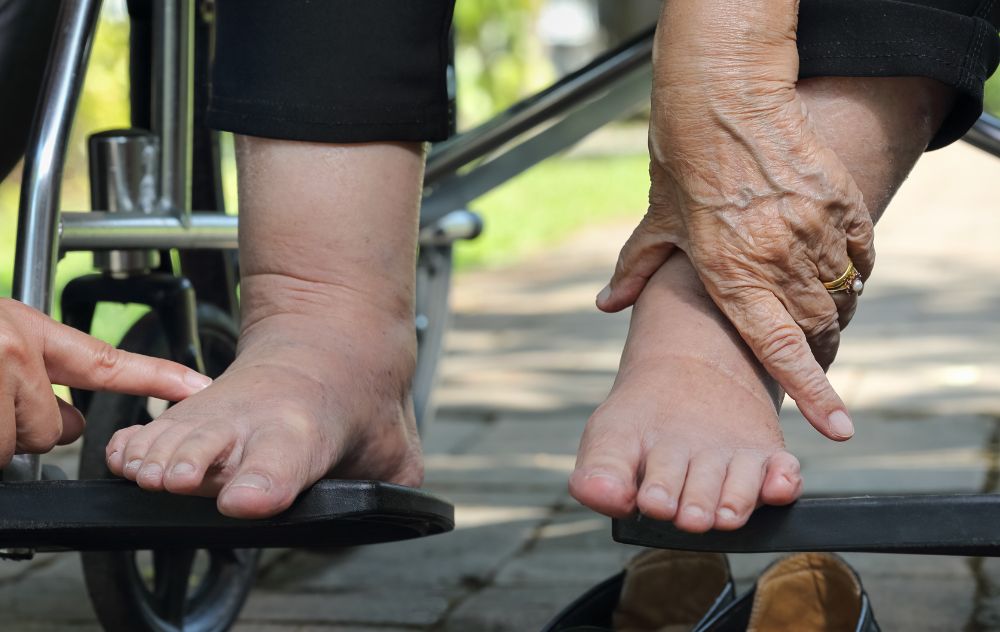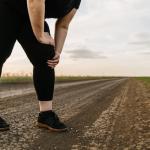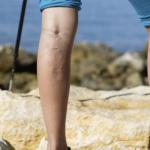
You’ve likely heard the term “blood pooling,” but may not know what it really means. We are here to teach you about blood pooling and what you can do to prevent it from happening.
What is blood pooling and what causes it?
Venous blood pooling is something that occurs when you have chronic venous insufficiency. What exactly does that mean? Chronic venous insufficiency is a vein issue that occurs when your veins are weak or damaged and cannot properly do their job.
The job of your veins is to pump blood back up to your heart, and they have one of the hardest jobs in your body. Your veins often have to work against gravity in order to get the blood back up to your heart, and the veins in your legs work the hardest. These veins are the furthest away from your heart and have to pump blood a much longer distance than any other part of your body. This explains why many people have vein issues in their legs.
Blood pooling occurs when the blood is unable to pump back up to your heart, and pools (or collects) in your legs, ankles, and/or feet.
Blood pooling in feet and legs can happen due to a number of different issues. You are more likely to experience blood pooling if you:
- Are overweight
- Are pregnant
- Have a family history of the problem
- Had damage to your leg due to injury, surgery, or previous blood clots
Johns Hopkins states that additional causes of chronic venous insufficiency include:
- Increased blood pressure in the leg veins over time, due to sitting or standing for long periods
- Lack of exercise
- A blood clot in the deep vein, often in the calf or thigh (deep vein thrombosis)
What are the symptoms of blood pooling?
Because all of these vein issues are things occurring under the surface of your skin, you may have no idea what is going on underneath. That is why it’s important for you to pay attention to different signs that may point to blood pooling.
Here are the main signs and symptoms of blood pooling:
- Swelling
- Cramps
- Pain
- Changes in the skin
- Leg ulcers
- Varicose veins
How do I prevent blood pooling?
Now that we’ve established blood pooling is not a good thing and is definitely something you don’t want to have happen, it’s time to talk about how to prevent it. The best way to prevent blood pooling is to stay away from any of the above factors that may put you at risk.
How do I stop blood pooling?
Sometimes you cannot avoid blood pooling (in the cases of family history, etc.), so if you do find yourself suffering from this issue, there are ways to stop it from getting worse.
How do I treat blood pooling?
As a starting point, plan on improving blood flow in your leg veins. To reduce swelling and improve blood flow, it’s important to keep your legs elevated. Wearing compression stockings may also help.
Regular exercise can also be an excellent way to boost the health of one’s leg veins by improving their cardiovascular system with increased circulation!
USA Vein Clinics offers a number of different vascular treatments to help with your blood pooling and venous insufficiency issues.
Sclerotherapy
Sclerotherapy is used to treat small and medium leg vein issues, mostly commonly spider and varicose veins. It is performed by your doctor injecting the damaged vein with a liquid that closes the vein.
Endovenous Laser Therapy (EVLT)
This form of vein treatment is used to treat large vein disease and large varicose veins on your legs. These veins are usually below the surface and not able to be seen without ultrasound. It is performed by your doctor inserting a small catheter into the diseased vein and using laser lights to generate heat, which then causes the vein to collapse.
Radiofrequency Ablation (RFA)
Radiofrequency ablation is used to treat large vein disease and large varicose veins on your legs. These veins are usually below the surface and not able to be seen without ultrasound. It is performed by your doctor inserting a small catheter into the diseased vein. Through this catheter, heat is delivered to collapse the vein.
VenaSeal
This approach to varicose vein treatment is also referred to as endovenous adhesive ablation. VenaSeal is performed by your doctor using a small catheter to put medical adhesive into your damaged vein to close that vein. This helps to redirect blood to healthy veins.
Phlebectomy
This treatment works best for removing varicose veins near the surface of your skin. Phlebectomy is performed by your doctor making a number of small punctures in your skin, and through those punctures, removing the damaged vein. This approach to vein treatment typically occurs without the need for stitches, and is often done with ELVA or radiofrequency ablation.
Medically Reviewed By:
Dr. Yan Katsnelson is a philanthropist, business owner, and highly skilled cardiac surgeon. He is the Founder and CEO of USA Vein Clinics, which is part of USA Clinics Group, the parent company of USA Fibroid Centers, USA Vascular Centers, and USA Oncology Centers, with more than 100 facilities nationwide. Dr. Yan has established himself as a strong advocate for accessibility and affordability of the most advanced medical care close to home. His mission is to create a positive experience for each patient with compassionate, personalized, and expert care.






